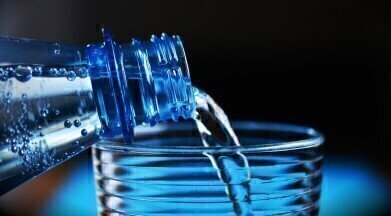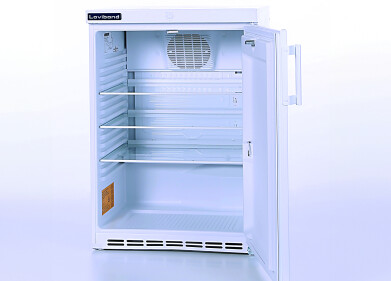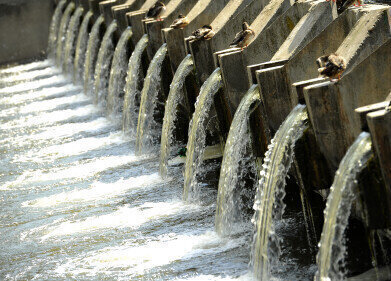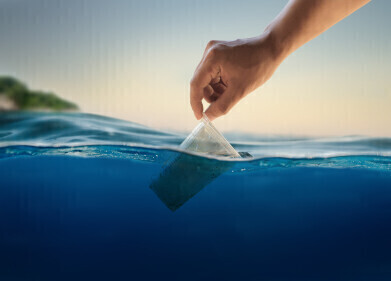Drinking water
Drinking Water From Plastic Bottles - Is It Safe?
Sep 10 2022
Over the last half century, the humble plastic bottle has skyrocketed in popularity. As well as containing fizzy drinks, cold beverages and even alcoholic options, it’s perhaps most commonly used as a vessel for drinking water. That’s because it’s cheap to manufacture and lightweight to carry around, as well as being extremely convenient for all concerned.
Of course, a growing awareness of the environmental pollution caused by the ubiquity of single-use plastics has generated a substantial backlash in recent years. However, there has been considerably less focus on the human health implications of consuming water from plastic bottles, with a body of evidence only recently emerging that suggests it might be far from an ideal course of action.
For this interested in learning more about the subject, this introductory article will investigate the various reasons why drinking water from plastic bottles could potentially endanger human health. It will also briefly explore whether the same issues are present in the food packaging industry, as well as examining some of the alternatives on the market available to consumers today.
Does bottled water deteriorate over time?
The first problem which might spring to mind when considering whether bottled water is safe to consume is whether it has passed its expiry date. In the UK, all manufacturers are required to print a date on the side of their bottle, which can be variously described as “expiry” or “best before”. This is to ensure optimum taste and quality of the product.
Strictly speaking, the water itself is not like to deteriorate or change at all over time. However, the vessel in which it is sold – plastic – could pose a problem over a prolonged period. That’s because the ridges inside the bottle have been found to be a perfect breeding ground for bacteria, with one study published in the Canadian Journal of Public Health finding almost two-thirds of 76 bottles sampled had dangerous levels of bacteria in them.
As a result, it’s a good idea to consume your water within the allotted timeframe indicated by the date printed on the bottle.
Does plastic leach into bottled water?
As well as fostering bacteria, bottled water quality can also become compromised by the plastic itself. That’s because this pliable substance can disintegrate over time, with microplastics finer than a human hair in diameter a particular problem. Their tiny size means they can easily be ingested by humans without noticing, and once inside the body, can even infiltrate the bloodstream.
In fact, one global study of 259 bottles of water from 11 different brands sold around the world found that 93% of samples contained microplastic particles. On average, the bottles contained 325 pieces of microplastic pollution per litre – but in one specific case, the sample obtained from Nestlé Pure Life was home to more than 10,000 particles per litre.
Of course, microplastic pollution is a problem far bigger than just the bottled water industry. In fact, it’s found in groundwater and soil samples, while understanding our exposure to airborne microplastics is a thorny issue still stumping scientists today. But any steps you can take to reduce your exposure, via bottled water for example, should be followed.
Which chemicals can affect bottled water?
Finally, there is the problem of the chemicals which go into the manufacture of plastic water bottles. These often contain a cocktail of chemicals which, if ingested on a regular basis, could wreak serious damage on the human body. Bisphenol A (BPA) is perhaps the most notorious of these and since the discovery of the health implications in those who have consumed it, it has largely been phased out of the industry.
However, there are plenty of others which should cause concern. For many years, polyethylene terephthalate (PET) was believed to be a safe option precisely because it is free from BPA, but recent research has revealed it can discharge other endocrine disruptors, such as phthalates, into the water. Meanwhile styrene, which is a possible carcinogen, is often used in the construction of water bottles.
As such, consumers are advised to avoid any product which contains those substances. To ascertain if a bottle is free from these pollutants, all that is required is to examine its base and ensure it does not contain a 3 (for phthalates), a 6 (for styrene) or a 7 (for bisphenols) in its recycling code. On an industrial level, more advanced techniques are thankfully available to determine whether these contaminants are present in drinking water today.
What are the health implications of exposure to chemicals found in bottled water?
BPA is by far the biggest offender when it comes to contaminated bottled water and the ill-effects on human health it can engender are as many as they are alarming. As an endocrine disruptor, it can contribute to reduced fertility in both sexes, miscarriage and premature birth, as well as other birth defects and altered neurological development in later life. It can even cause obesity, asthma and inhibited liver function.
Meanwhile, phthalates are equally concerning. Another endocrine disruptor, they have been found to interfere in the growth of male genitalia, enhance the incidence of childhood obesity and even cause cardiovascular diseases. And as mentioned above, styrene is a known carcinogen which could potentially cause cancer in those exposed to it over a long period. Finally, the fact that there are a dizzying array of contaminants of emerging concern (CEC) about which little is yet known is further food for thought.
What’s the difference between tap water and bottled water?
Fortunately, there are options available to those who wish to limit their exposure to such substances. Despite widespread public perception (largely thanks to a successful industry marketing campaign), tap water is often not lower quality than bottled water – and in some cases, it can even be safer for consumers to drink.
That’s because public water sources are subject to rigorous testing protocols, with all contaminants checked and any abnormal concentrations reported to the relevant authorities. On the other hand, private bottled water companies are usually left to conduct their own testing regimes, the results of which can sometimes be difficult to come by. As such, the water which comes out of your tap may not be lower quality than high-priced alternatives, especially if you use a quality filter system.
Can plastic bottles be reused?
With concerns about plastic pollution on the rise, there has been a transition towards buying reusable bottles instead. While this is great in terms of environmental footprint, it might not be quite such a smart strategy with regard to human health. That’s because reusing a plastic bottle amounts to nothing more than giving the microplastics and chemicals contained within further chances to contaminate the liquid.
Of course, some types of plastics are made of sturdier stuff than others, but none are completely safe from the threat of contamination – especially if exposed to direct sunlight or proximity to extreme heat. As such, the safest course of action is to substitute your plastic water bottle for a stainless steel or glass alternative, which are also inexpensive and easier to recycle.
Is plastic food packaging safe?
It should be noted that plastic is not just used to transport water, but all manner of other foodstuffs and products, too. From clingfilm and Ziplock bags to polystyrene trays and takeaway Tupperware, plastic is found everywhere in the food industry. Do these receptacles pose the same problems as those caused by bottled water?
The short answer here is: yes. Since the same materials are used to manufacture food packaging, they carry the same risk of leaching chemicals and microplastics into the food you consume. Again, that’s even truer when exposed to heat, which means that microwaving leftovers in a plastic tub is highly inadvisable, despite being practiced by most households around the country. Instead, it’s a good idea to serve up your meal onto a plate prior to warming it in the microwave so as to avoid exposure.
What are the alternatives to plastic food packaging?
Just as the environmental concerns over single-use water bottles have become more mainstream in recent years, so too have those surrounding plastic food packaging. That has led to an abundance of more eco-friendly (and health conscious) alternatives, with the UK government even outlawing certain types of single-use plastic packaging going forwards.
Cardboard is one popular option, since it’s easily recyclable or compostable in any household and is cheap, versatile and easily brandable for manufacturers. While glass cannot be composted like cardboard, it is infinitely recyclable and its durability makes it much more sustainable. Bioplastics, which are constructed from natural polymers such as agricultural waste, are another alternative rapidly growing in popularity. They do not consume non-renewable resources and their biodegradability means they leave no footprint behind them, either.
With that in mind, searching out products that are packaged in a biodegradable or more conveniently recyclable alternative is not only beneficial for the future of the planet – it could also boost your health by avoiding exposure to damaging chemicals, toxins and microplastics, too.
Digital Edition
IET 35.2 March
April 2025
Air Monitoring - Probe Sampling in Hazardous Areas Under Extreme Conditions - New, Game-Changing Sensor for Methane Emissions - Blue Sky Thinking: a 50-year Retrospective on Technological Prog...
View all digital editions
Events
May 06 2025 Nuremberg, Germany
May 10 2025 Karachi, Pakistan
May 11 2025 Vienna, Austria
May 11 2025 Seoul, South Korea
Salon Analyse Industrielle & Instrumentation
May 14 2025 Paris, France






.jpg)


_(4427399123)-(2).jpg)









